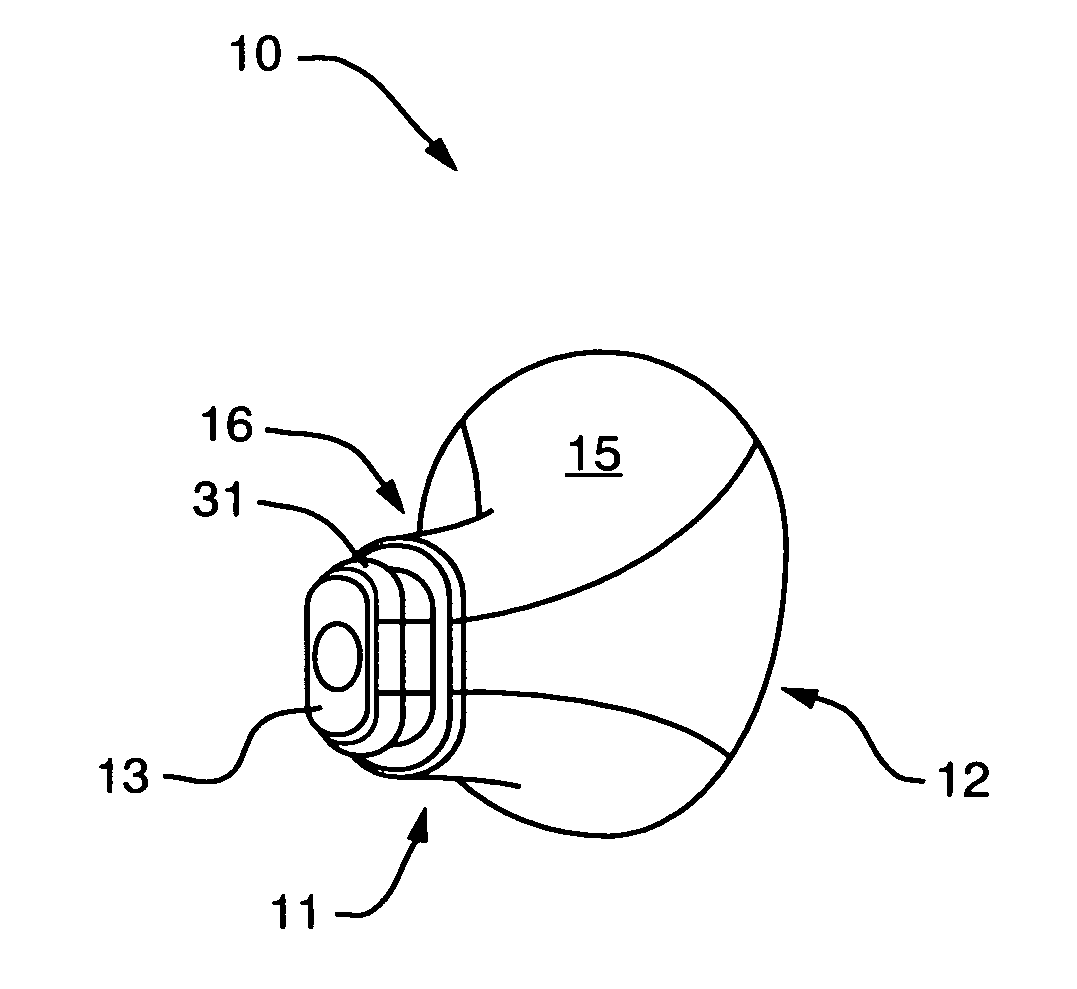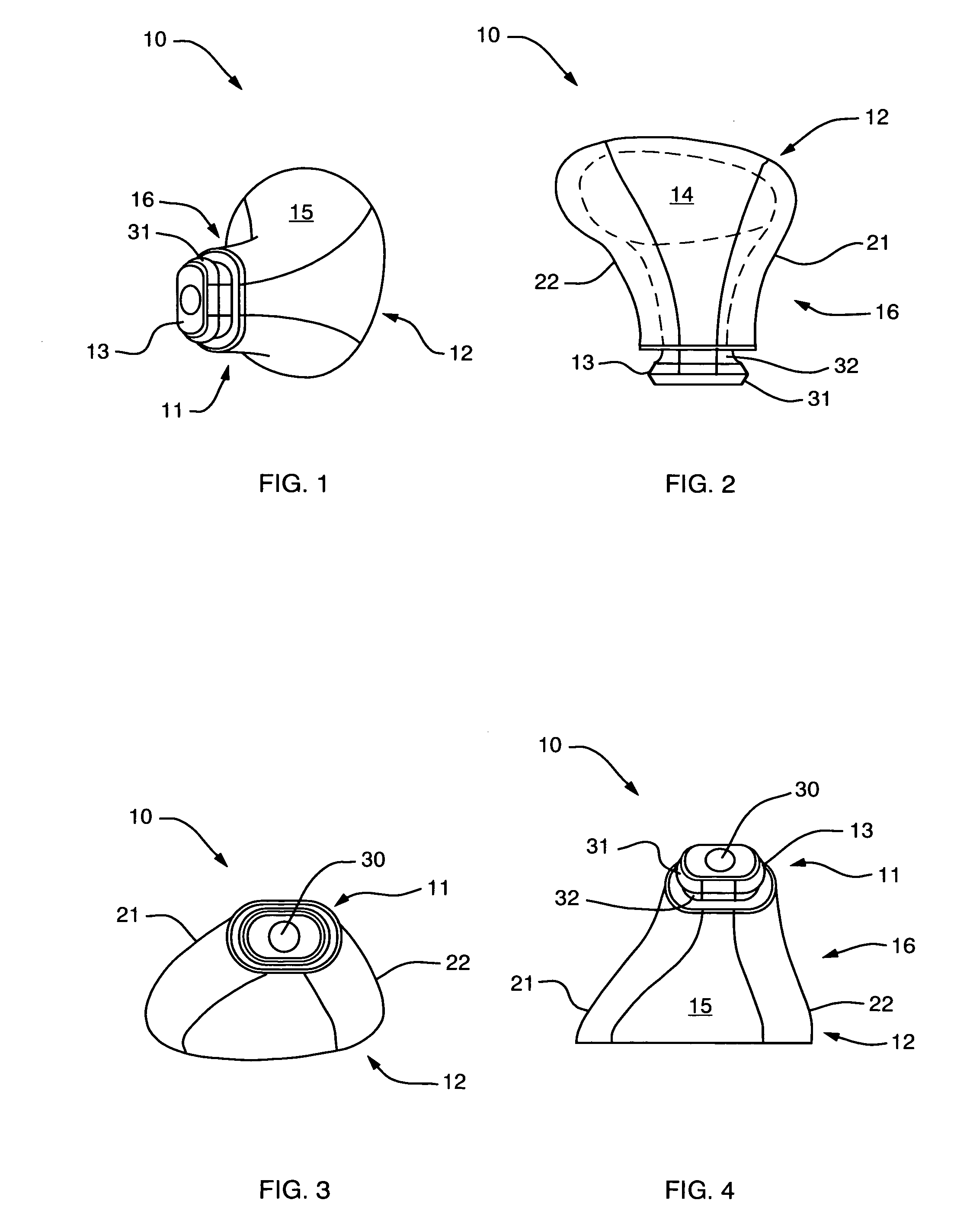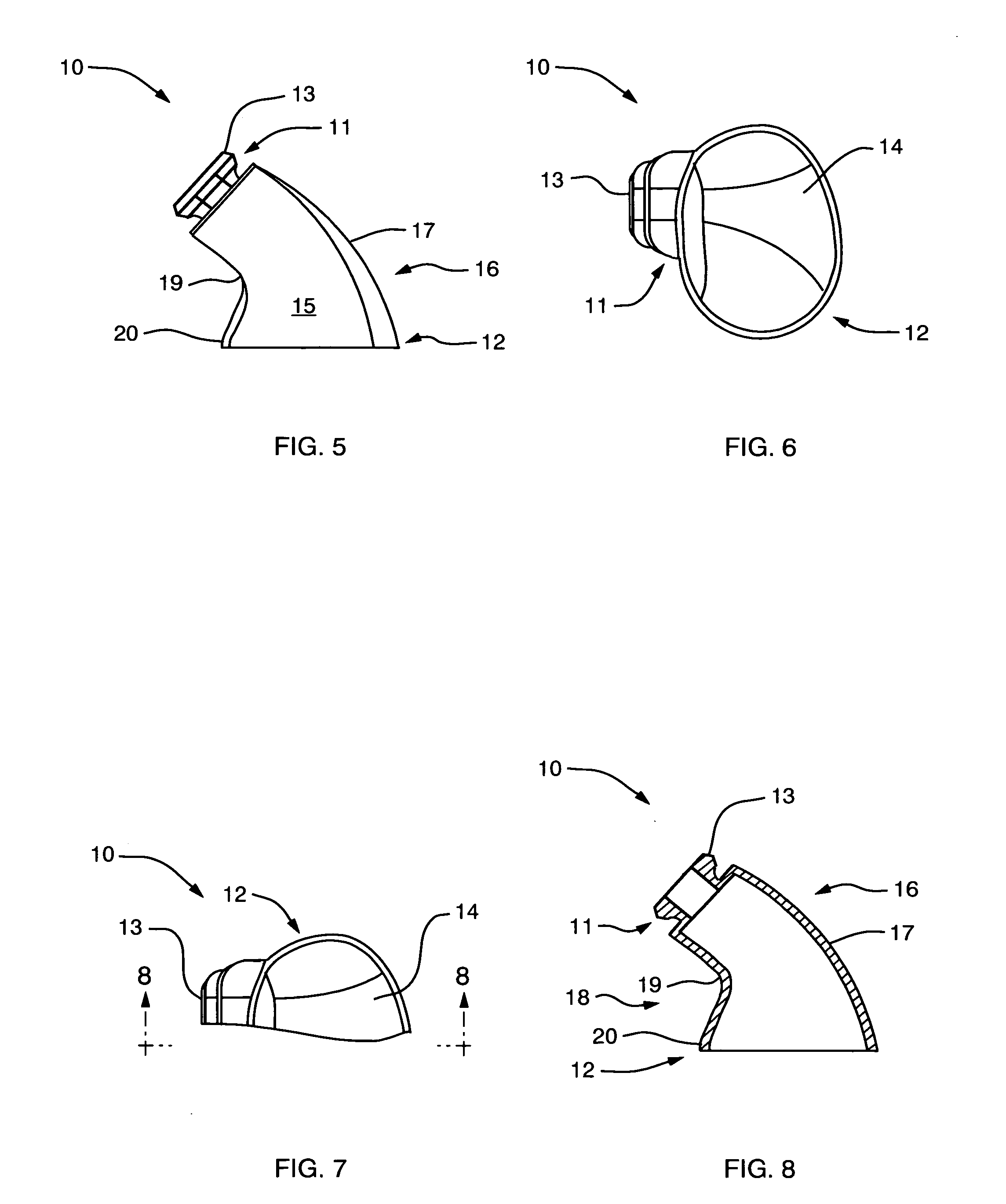Shell and tip for hearing aid
a hearing aid and shell technology, applied in the field of hearing aids, can solve the problems of difficult to meet the fit needs of a wide range of individuals, and difficult to create a reasonable number of standardized shells configured to fit a substantial number of individuals, etc., to achieve the effect of reducing the insulation of the sound exchange, reducing the rotation of the device, and reducing the cost of acquisition
- Summary
- Abstract
- Description
- Claims
- Application Information
AI Technical Summary
Benefits of technology
Problems solved by technology
Method used
Image
Examples
Embodiment Construction
[0026] A hearing aid shell 10 of the present invention is shown in FIGS. 1-8. The hearing aid shell 10 shown in FIGS. 1-8 is a right-ear version thereof. It is to be understood that a left-ear version would be a mirror image of the right-ear version. Therefore, the following detailed description of the shell 10 is applicable to both right-ear and left-ear versions. The shell 10 includes a front end 11 and a back end 12. The front end 11 is designed for insertion into the ear canal. It includes a head section 13 for receiving and retaining thereon an optional removable hearing aid shell tip to be described herein. The shell tip is designed to separate the head section 13 from direct physical contact with the interior of the ear so as to reduce wax buildup on the front end 11, and to aid in establishing a snug fit in the ear. The back end 12 includes a port 14 for insertion into a shell body 15 the electronics required to effect the amplification of sound entering a hearing aid includ...
PUM
 Login to View More
Login to View More Abstract
Description
Claims
Application Information
 Login to View More
Login to View More - R&D
- Intellectual Property
- Life Sciences
- Materials
- Tech Scout
- Unparalleled Data Quality
- Higher Quality Content
- 60% Fewer Hallucinations
Browse by: Latest US Patents, China's latest patents, Technical Efficacy Thesaurus, Application Domain, Technology Topic, Popular Technical Reports.
© 2025 PatSnap. All rights reserved.Legal|Privacy policy|Modern Slavery Act Transparency Statement|Sitemap|About US| Contact US: help@patsnap.com



